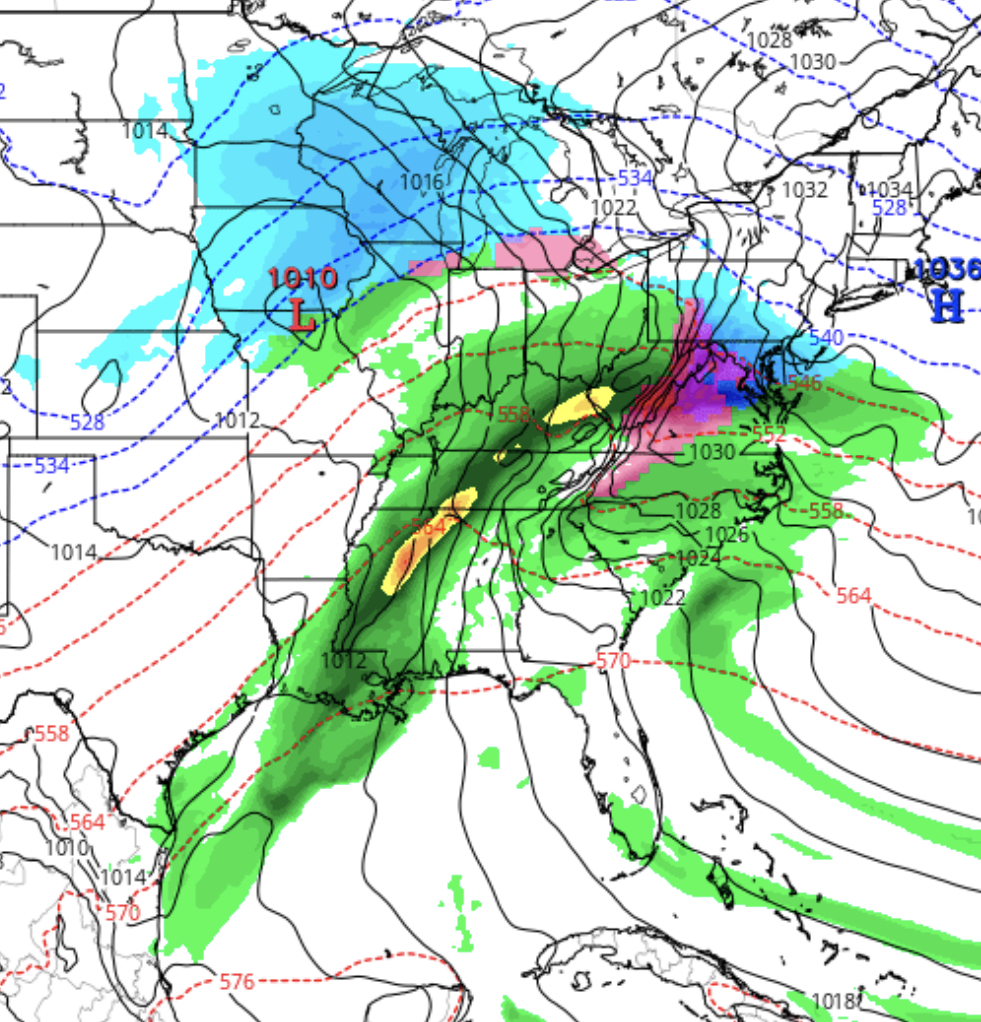[su_box title=”Winter Weather Update: Tuesday 8 PM” box_color=”#defcdc” title_color=”#000000″]A quick review of the today’s models. We’re back to 4-5 inches of snow, changing to sleet about 5 pm. Tonight’s NAM data starts becoming available after 9 pm and I’ll update sometime after 9:40. [/su_box]
[su_box title=”Winter Weather Update: Tues 9:30 AM” box_color=”#defcdc” title_color=”#000000″]A change in the forecast, based on the latest NAM. Precipitation starts about 10 AM, earlier to the west and southwest. Snow until about 4-5 PM, then a changeover to sleet and then some freezing rain.
The revision in the forecast- most of the QPF will be arriving after the changeover to sleet.. about 3 inches of snow expected, more north and especially west, before a changeover to an extended period of heavy sleet and sleet mixed with rain, then rain.
I’ll be updating this evening. Likely update time is around 9:30 PM.[/su_box]
I’m waiting for the latest NAM data. Last night’s NAM and GFS moved the precipitation start time later to 10-11 AM (with the exception of the FV3-GFS which still maintains an earlier start.)
NAM QPF values for the morning and afternoon increased to 0.80 inches water, but some of that will be falling as sleet. The NAM maintains freezing temperatures into the evening. At the current time, I’m still with 4-6 inches, leaning towards the higher amount, before a changeover to an extended period of sleet. Snowfall will be heavy in the early afternoon.
I’ll be updating with the NAM data this morning, before 10 AM.
A very busy schedule at work today, so I probably won’t get a chance to further update until this evening. (It will be this evening’s data that will be most important.)

